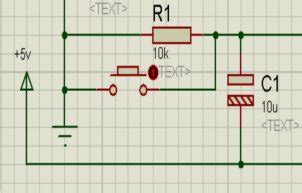ADC (AnalogtoDigital Converter) is a crucial component in embedded systems, converting analog signals into digital values for processing by a microcontroller or microprocessor. The programming workflow for ADC involves several steps, ensuring accurate conversion and integration with the overall system functionality.
The first step in ADC programming is initialization. This involves configuring the ADC module of the microcontroller, setting parameters such as resolution, voltage reference, sampling time, and data alignment. Initialization varies depending on the microcontroller architecture and the specific ADC peripheral used.
After initialization, configure the ADC channels based on the input signals to be converted. Specify which analog channels are enabled for conversion, their corresponding pin mappings, and any additional settings such as input voltage range and sampling frequency. This step is crucial for selecting the appropriate input signals and optimizing the ADC's performance.
Sampling is the process of capturing analog input signals at regular intervals and converting them into digital values. In softwaretriggered ADC conversions, initiate sampling by issuing a start conversion command in the code. Alternatively, in hardwaretriggered mode, configure external triggers such as timers or interrupts to start conversions automatically.
Once sampling is initiated, the ADC performs the conversion process. The analog voltage on the selected channel is compared against the reference voltage, and the resulting digital value is stored in a designated register. The conversion resolution, sampling rate, and accuracy depend on the ADC's specifications and configuration settings.
After conversion, handle the digital data appropriately within the microcontroller firmware. This may involve scaling the raw ADC values to obtain meaningful engineering units, applying calibration factors for accuracy, or performing additional signal processing algorithms depending on the application requirements.
To improve efficiency and reduce CPU overhead, utilize interrupts or Direct Memory Access (DMA) for ADC data transfer and processing. Configure ADC interrupts to trigger when conversion is complete, allowing the CPU to perform other tasks until data is ready. DMA can be used for automatic data transfer between ADC and memory, freeing up the CPU for other operations.
Implement error handling mechanisms to detect and handle any anomalies during ADC operation, such as overflows, underflows, or voltage reference errors. Additionally, perform ADC calibration procedures to ensure accurate and reliable conversion results over the entire operating range and under varying environmental conditions.
Optimize power consumption by configuring the ADC module for lowpower modes when not actively converting. This involves disabling unnecessary peripherals, reducing clock frequencies, and utilizing hardware features such as automatic powerdown modes to minimize energy consumption during idle periods.

The ADC programming workflow involves a series of steps from initialization to power management, ensuring accurate analogtodigital conversion and integration within the embedded system. By understanding and following these steps, developers can effectively utilize the ADC functionality in their microcontrollerbased projects, meeting the requirements of various applications.
文章已关闭评论!
2024-11-26 14:46:08
2024-11-26 14:44:46
2024-11-26 14:43:22
2024-11-26 14:42:07
2024-11-26 14:40:41
2024-11-26 14:39:34
2024-11-26 14:38:19
2024-11-26 14:37:11